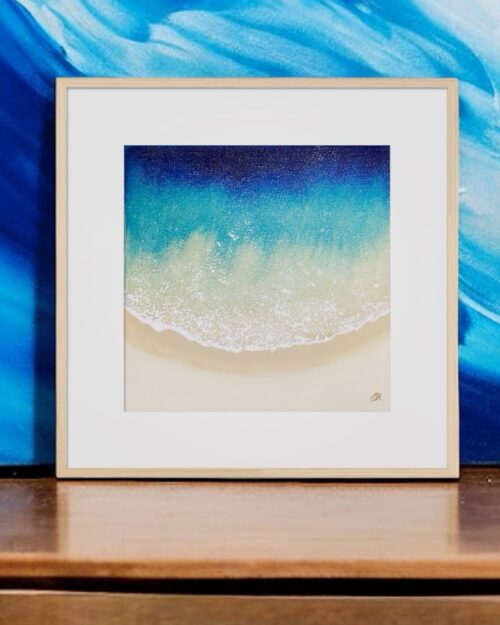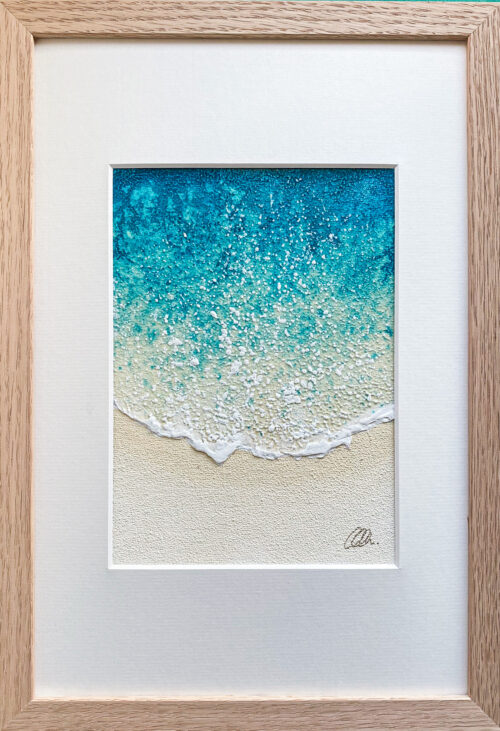
When it comes to wall art, size definitely matters! You want to choose a painting that is the right size for your space. If it’s too small, it will be lost and look insignificant. If it’s too large, it will overpower the room and make it feel cramped.
In this blog post, we will discuss how to choose the right size painting for your space.
Wall Art Size Guide
Determine the size of your space
Before you can decide on the right size artwork for your space, you need to know the dimensions of your walls. To do this, you will need a measuring tape and a notepad. First, measure the width of the wall from one end to the other. Write down this measurement in inches or centimeters. Next, measure the height of the wall from top to bottom. Again, write down this measurement in inches or centimeters. Now that you have these measurements, you can start shopping for artwork! But before you do, there are a few more things to keep in mind…
Will your painting be displayed above furniture?
If you plan on hanging your painting above a piece of furniture, such as a sofa, a bed, a fireplace or a dining table, the width of the furniture and height from the top of the furniture to the ceiling should replace the wall dimensions. Why? Simply because you want to make sure the artwork is proportional to the furniture.
For example, if you have a sofa that is 80 inches wide, your painting should not be 80 inches or wider, otherwise, it will look out of place and unbalanced. Alternatively, you don’t want a small 12-inch painting displayed above a large sofa. It will look out of place and won’t contribute to the aesthetics of your space.
What goal are you trying to achieve with art?
Size is not the only factor to consider when choosing artwork for your home. You also need to think about what you want the painting to achieve.
Are you looking for something that will make a statement and be the focal point of the room?
What better way to make a statement than with a big, bold piece of art? But it’s important to get the scale right – you don’t want your art to be too big or too small for the space. A good rule of thumb would be a piece of art that covers 70% of the width of your space and 50% of its height. This will ensure that your art is the focal point of the room without overwhelming it.
Are you looking for something that will complement the existing décor and add a pop of color?
If your home is already busy with decorations and furniture, an oversized piece of art might not be the best solution.
In that case, it’s better to look for something that will complement the existing décor and add a pop of color, but will not act as a focal point.
Instead, choose smaller pieces that can be hung in an empty space on a wall or displayed on a shelf.
Adding a gallery wall is also an excellent way to add color without making the space feel too cluttered. Instead of hanging one large piece, try multiple smaller ones arranged together to fill the space.
What if you have a large blank wall?
If you have a large wall to fill, you might be drawn to an oversized art piece that fills both the height and width of your wall, but there are a few additional things to consider:
Think about the overall space in the room
A simple way to decide wether or not you should go for an oversized piece of art is to consider the overall space in the room.
You should not only consider the width and height of your wall, but also the distance from which you can see your art piece without any obstacles.
For example, if you have a 20-foot long hallway with high ceilings, an oversized piece of art might be perfect because you will be able to see it from a distance without any obstacles.
On the other hand, if you want to fill a large wall in a 2-foot deep corridor, going oversize might not be the best choice as you likely won’t be able to take distance and fully see your artwork.
Think About Your Budget
While an oversized painting can make a dramatic statement for a large blank wall, it will also be more expensive. Oversized art is expensive for a few reasons : the cost of material for the artist, the time spent creating the piece and the cost of shipping, stretching (if shipped rolled in a tube), and framing your art piece.
Conclusion : How to choose the best wall art size?
There are a few things to consider when choosing the best wall art size for your home: the dimensions of your furniture, the height of your ceilings, the amount of space you have, and your budget.
Remember, the goal is to find a piece that is proportional to your furniture and complements the existing décor in your home.
With a little bit of planning, you’re sure to find the perfect piece of art for your space!
Still having trouble picking the right size? Let us help you out by getting in touch here.






